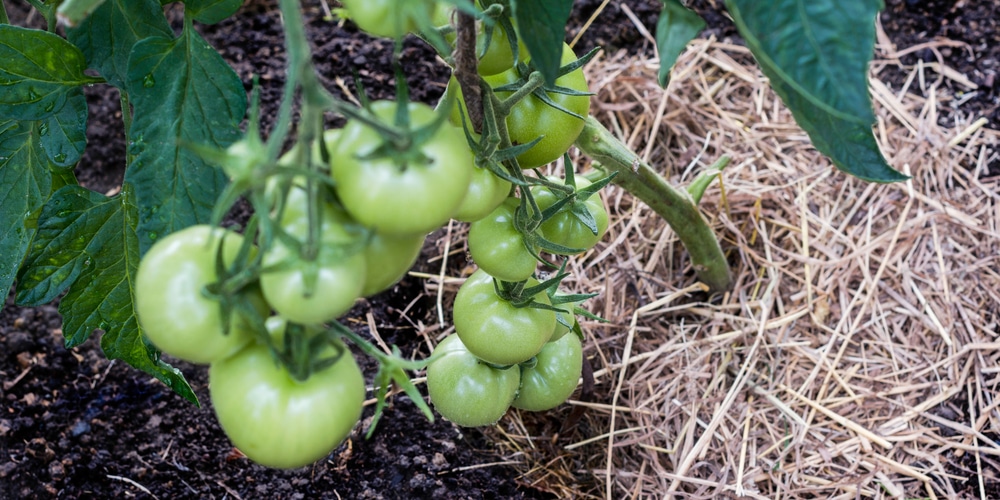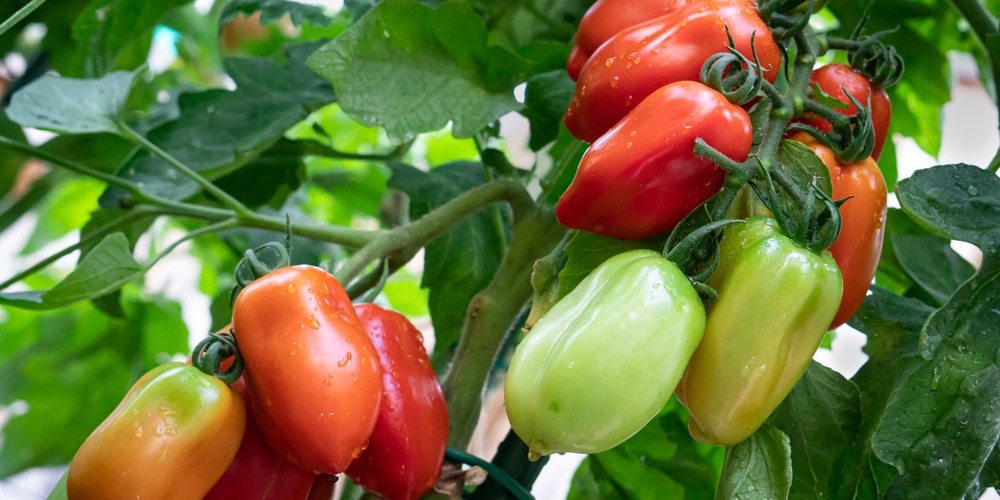As anyone who has ever grown tomatoes knows, the fruit is notoriously fragile. A single gust of wind can knock them off the vine, and they often split or crack when they hit the ground.
This is incredibly frustrating for gardeners who have taken great care to grow healthy plants, only to see their hard work go to waste. While external factors such as wind and rain can damage tomatoes, it’s a different story when the fruit falls off prematurely.
Falling Tomatoes on the Ground: Why Does This Happen?

Tomatoes fall off the plant for different reasons, and one of the major factors contributing to this problem is plant stress. Multiple factors like heat waves, drought, and nutrient deficiencies can lead to plant stress, which in turn causes the fruit to drop prematurely. Sometimes, tomatoes are simply too big that the plant can’t support their weight, and they fall off.
Insufficient Sunlight
Tomatoes need at least six hours of sunlight per day to produce fruit. If they don’t get enough sun, the plants will become leggy, and the tomatoes will be small. Unfortunately, this can also cause the fruit to drop prematurely.
Plant or transplant your tomatoes in an area that gets at least 6-8 hours of full sunlight daily. Practice proper spacing to allow for adequate airflow, preventing other plants from overshadowing your tomatoes. Too much shade and not enough sun is one of the main reasons why your tomatoes may start falling off, and you can easily remedy this by ensuring they get enough sunlight.
Extreme Temperatures
If you’ve been growing tomatoes for years, have you ever experienced a summer where the temperatures were so hot that your plants just stopped growing? Sometimes, they won’t produce any fruit at all.
Excessively high and low temperatures may affect the pollination process. The ideal growing and fruit production temperature is anywhere between 60-70 degrees Fahrenheit.
Anything above and beyond that can cause the flower to abort, which means no tomato. The same thing happens when your plant is starting to develop its fruits. Extreme temperatures can cause the fruit to drop off from the plant.
If you know that you live in regions where temperatures can get extremely hot, investing in UV shade cloths can be beneficial. This will create a microclimate for your plants.
This can help filter out the harsh rays of the sun and prevent your tomatoes from getting too much heat but still be able to provide your plants the light they need to grow.
In addition to a protection cloth, you can also mulch around the soil to help the plant retain moisture. This allows the soil to stay cool, especially during expected heat waves.
Insufficient Watering
Tomatoes need lots of water, especially during their fruit development stage. Drought is one of the most common reasons why tomatoes fall off the plant prematurely. The lack of water causes stress to the plant, which in turn affects the fruit.
This can be easily fixed. You may have heard this multiple times, but when taking care of tomato plants, water deeply; at least 1-2 inches of water every week will suffice. Of course, you may have to adjust this depending on the climate and weather conditions. You can cut back your watering schedule if it’s been raining a lot.
By watering deeply, its roots get stronger, allowing the plant to better anchor itself in the soil. This helps to reduce the chances of your tomatoes falling off.
Overripe Tomatoes
The riper the tomatoes get, the easier it is to pull them off the plant. This is because as the fruit matures, it starts to separate from the stem.
When tomatoes are overripe, they are more susceptible to damage. A little bump can cause them to fall off and break open.
You can provide your plants some support to ensure that the fruits won’t get knocked off easily. Stakes or cages can help do the trick. Additionally, harvest when they’re ripe – this will also help to reduce the chances of your tomatoes falling off and getting damaged.
Improper Fertilization
It could be either you’re over or under-fertilizing your tomato plants. Too little nutrients and the plant’s stems will get weak. For instance, if it lacks phosphorous and potassium, the fruits may remain small, won’t develop properly, or simply fall off even before harvest time.
Too much nutrients, on the other hand, will cause the leaves to grow more than the fruit, prioritizing leaf growth over the development of fruits.
The key is to find the right balance. Use a fertilizer that’s high in nitrogen during the early stages of growth. Once the plant starts to flower and fruit, switch to phosphorus and potassium-rich fertilizer.
Nutrient imbalances are often common in container-grown tomatoes. This is because the nutrients in the potting mix are quickly used up.
What can you do? Choose a slow-release fertilizer and make sure to fertilize your plants every two to four weeks.
Falling Tomatoes: Final Thoughts
While some varieties are more prone to falling than others, there are ways to prevent your tomatoes from falling off the plant prematurely.
Provide tomatoes with sufficient sunlight, support them with cages or stakes, water them deeply, and fertilize them properly. Oh, and don’t forget to harvest them once they’re ripe!
Providing these plants with their ideal growing conditions will provide you with a good homegrown tomato harvest, with little to no fruit falling off the plant prematurely.
